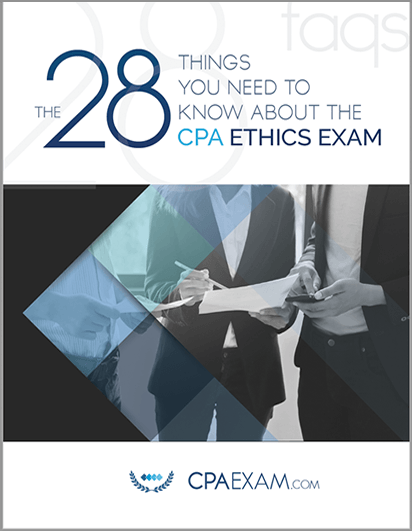The Uniform CPA Exam is one of the most stringent qualification exams in the world. It requires test takers to meet a high level of accounting education and leads to one of the greatest accomplishments: becoming a licensed CPA. The CPA profession is one of the most highly respected in the world and can be a fast track to a successful and lucrative career. However, you have to get through the CPA Exam first. The exam is divided into four sections, which are taken one at a time:
- Financial Accounting and Reporting (FAR)
- Auditing and Attestation (AUD)
- Business Environment and Concepts (BEC)
- Regulation (REG)
In this article, we’ll take a look at the Financial Accounting and Reporting section, or FAR. Most CPA Exam Review courses and accounting instructors recommend taking FAR first. FAR is often considered the easiest section because much of the content is directly related to your education, and there is a good chance you’ve encountered many of the questions or situations in your accounting courses. However, don’t let your guard down; the FAR section can also be one of the toughest, as it is the most comprehensive and wide-ranging section of the entire exam.
Key Topics Covered in FAR
FAR covers material from every financial and cost/managerial accounting course you went through in college, as well as governmental and non-profit accounting. According to the American Institute of CPAs (AICPA), FAR encompasses:
- Concepts and standards for financial statements
- Typical items in financial statements
- Specific types of transactions and events
- Accounting and reporting for governmental entities
- Accounting and reporting for non-governmental and not-for-profit organizations
Exam Format
The FAR section is four hours long and consists of three sections, or “testlets.” Each testlet contains 30 multiple-choice questions, although one testlet includes seven task-based simulations. The difficulty of the questions in testlet two and three depends on your performance in testlet one. If you answer testlet one with relative ease and get most of them right, you will receive harder questions in the subsequent testlets. Conversely, if you struggle with testlet one, you will be presented with easier questions in the following testlet. However, harder questions carry more points for a correct answer.
Test-Taking Strategies
Many exam-takers recommend marking all calculation questions and skipping them initially, opting instead to complete all theory questions first. This strategy allows you to get easier questions out of the way, providing a clearer estimate of the time available for calculation questions. Keep in mind that this is just one strategy; each exam-taker has their preferred methods.
Focus Areas for Study
Governmental and non-profit accounting can account for up to 25% of the exam score, so it is crucial to study these concepts thoroughly. To enhance your preparation, ensure you practice plenty of simulated multiple-choice questions and practice exams for FAR. The more familiar you are with FAR questions and simulations, the better your chances of passing.
Final Tips
The night before the exam, make sure to get enough sleep and manage your stress levels. Trust in your preparation and approach the exam with confidence.
